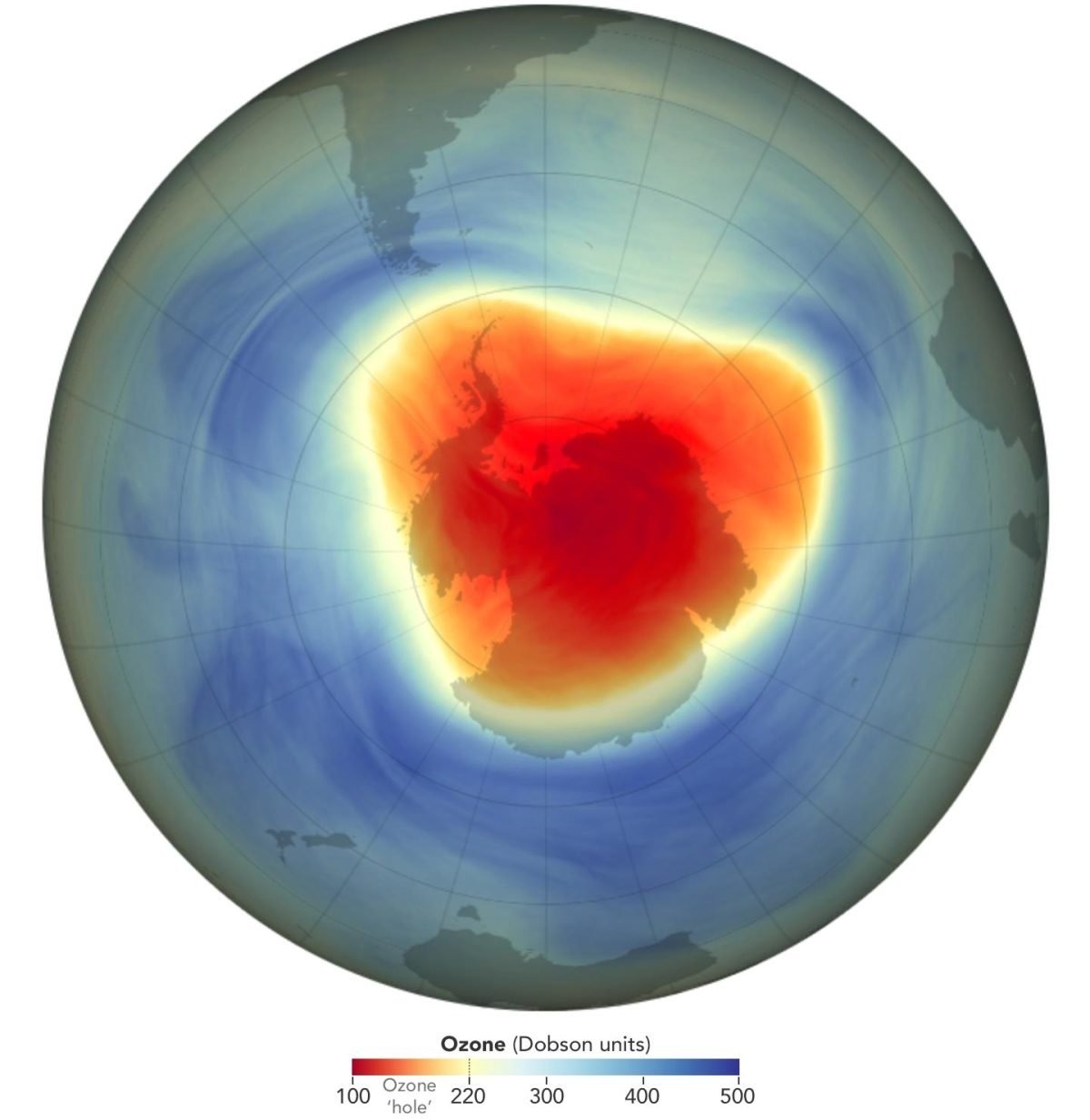The ozone hole over Antarctica in 2024 covers more than 20 million km2 — that’s about three US territories, or 33 territories of Ukraine. Although its depletion this year is less than in previous years. The ozone layer protects the Earth from dangerous ultraviolet radiation, and its depletion threatens to increase skin cancer rates, reduce crop yields, and destroy ecosystems.
The decline in chlorofluorocarbons was made possible by the 1987 Montreal Protocol, which promoted the gradual replacement of ozone-depleting chemicals with environmentally friendly alternatives. According to NASA data, on September 28, 2024, the ozone hole reached a maximum area of 22.4 million km2, that is the smallest size in recent years — the current hole has ranked 20th in terms of area for 45 years of observations. This result is encouraging and indicates the efficacy of the protocol. According to NASA’s Paul Newman, this gradual improvement is the result of international efforts and the reduced use of harmful substances.
Despite the positive changes, the ozone layer has not fully recovered yet. The main sources of chlorofluorocarbons remain coolants in refrigerators and air conditioners, as well as aerosols in some household products. According to NOAA’s Steven Montzka, current 2024 measurements show progress, but full recovery is still a long way off.
The ozone layer is studied and monitored by NASA’s Aura and NOAA satellites, which track changes in Antarctica’s stratosphere. On October 5, the minimum ozone concentration of 109 Dobson units for all of 2024 was recorded. For example, scientists describe the ozone hole as a region where ozone concentrations fall below the historical threshold of 220 Dobson units.

It is predicted that the ozone layer could fully recover by 2066, a major achievement in environmental cooperation and scientific research.
What is a Dobson unit?
The Dobson unit (DU) is a standard measurement of ozone concentration in the Earth’s atmosphere. It quantifies the total amount of ozone in the air column from the surface to the edge of space. One Dobson unit is equal to a 0.01-millimeter layer of pure ozone at standard temperature and pressure. For example, 300 DU forms a 3-millimeter ozone layer if it is compressed.
Scientists use Dobson units to observe ozone conditions around the world, providing insight into seasonal rarefaction and recovery patterns.
We previously reported on how the ozone layer protects us from cosmic radiation.
Provided by noaa.gov


